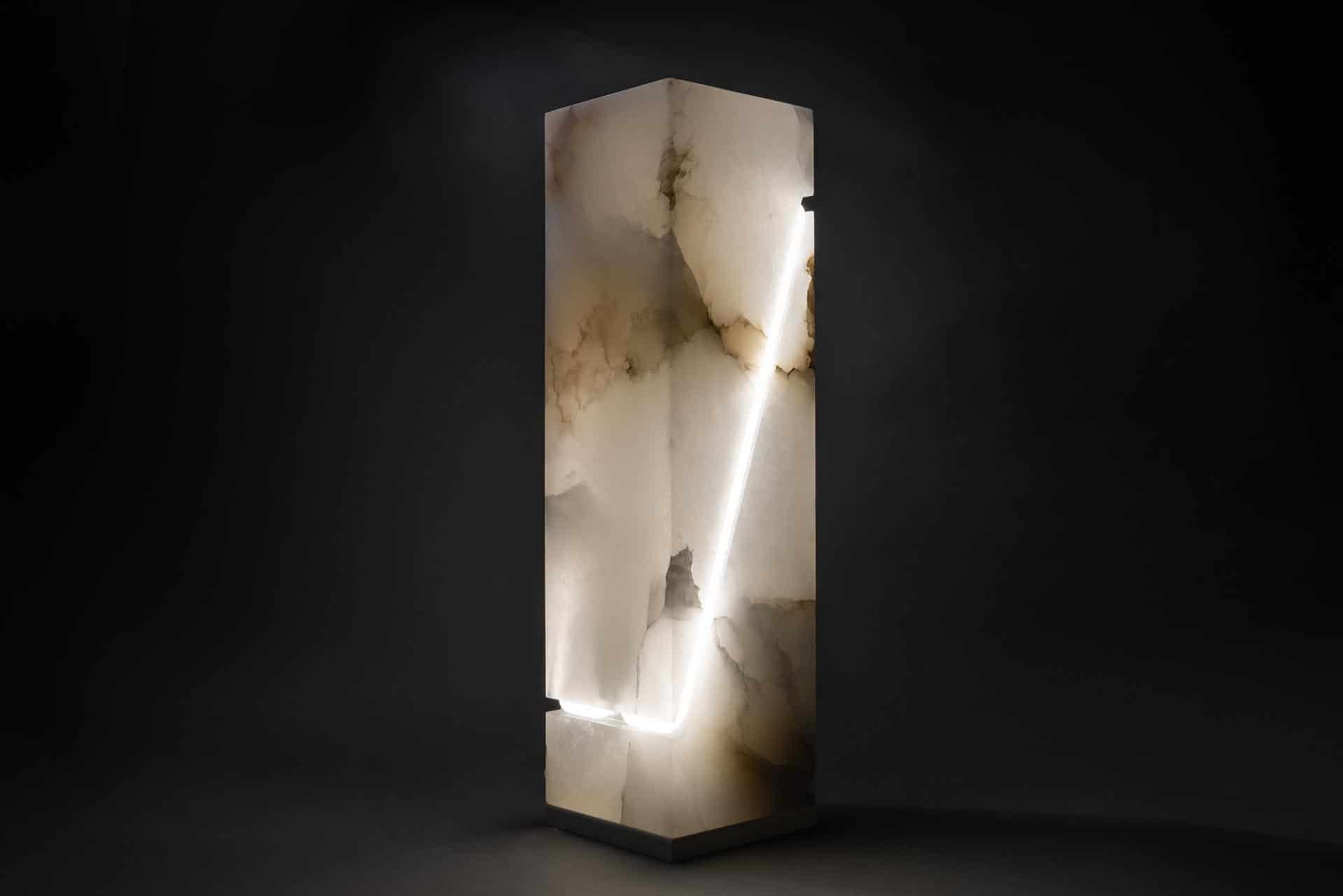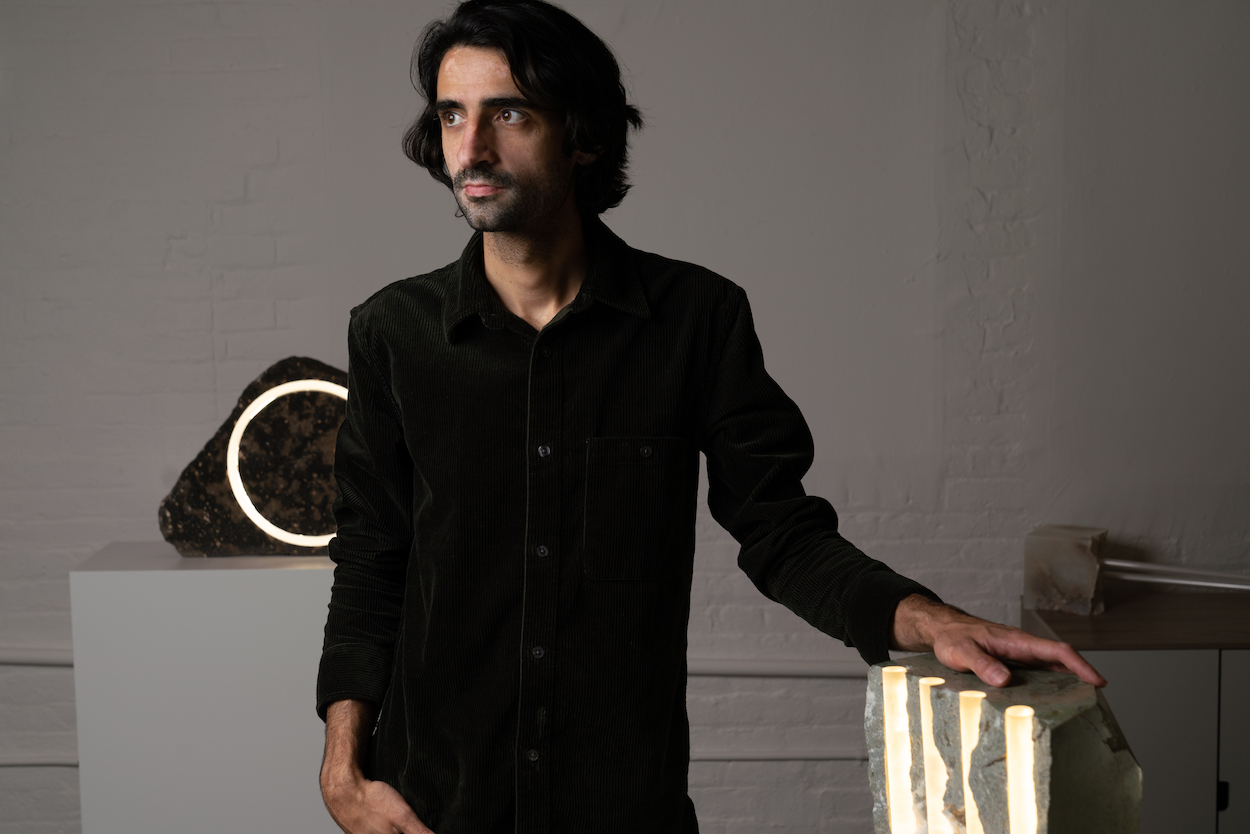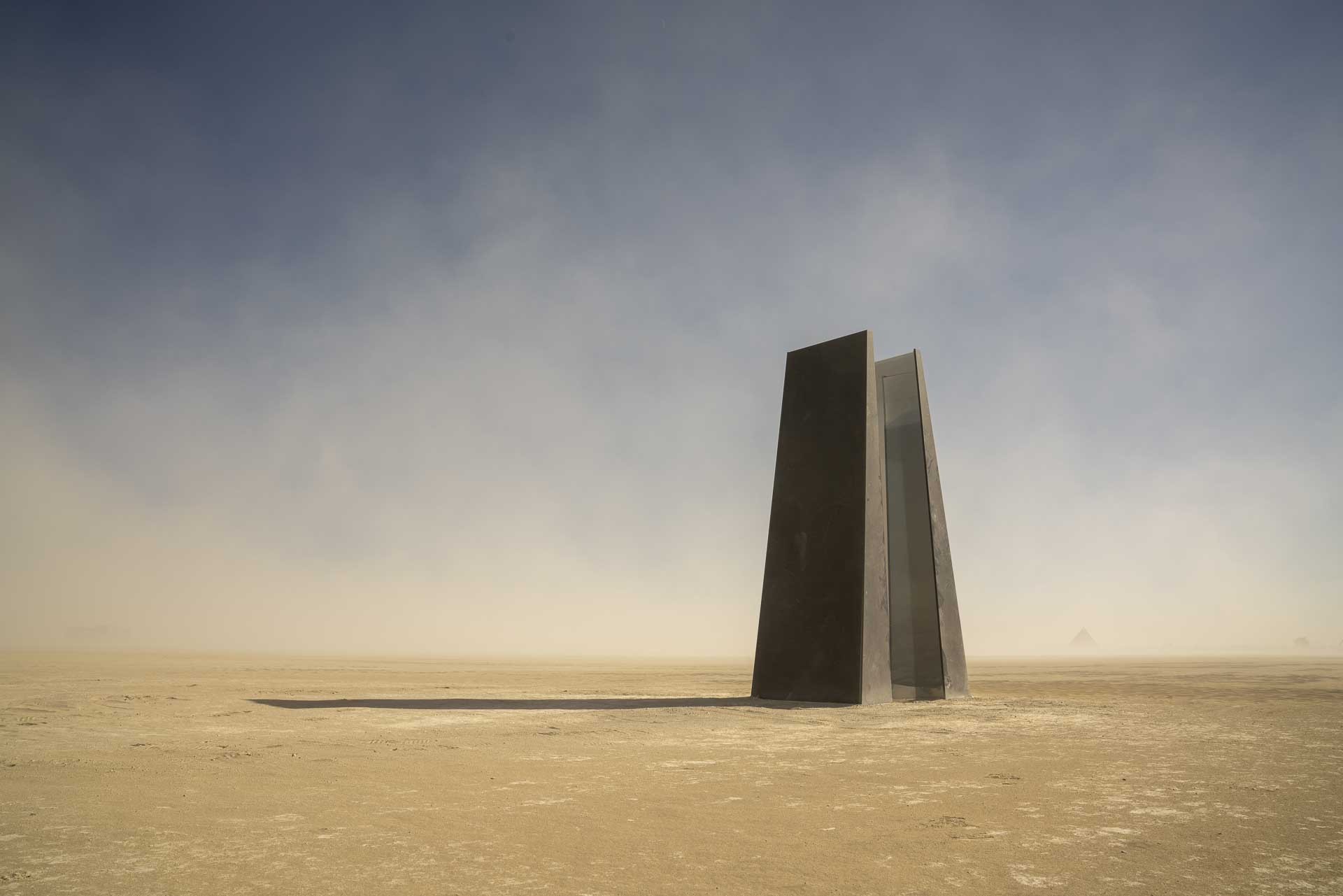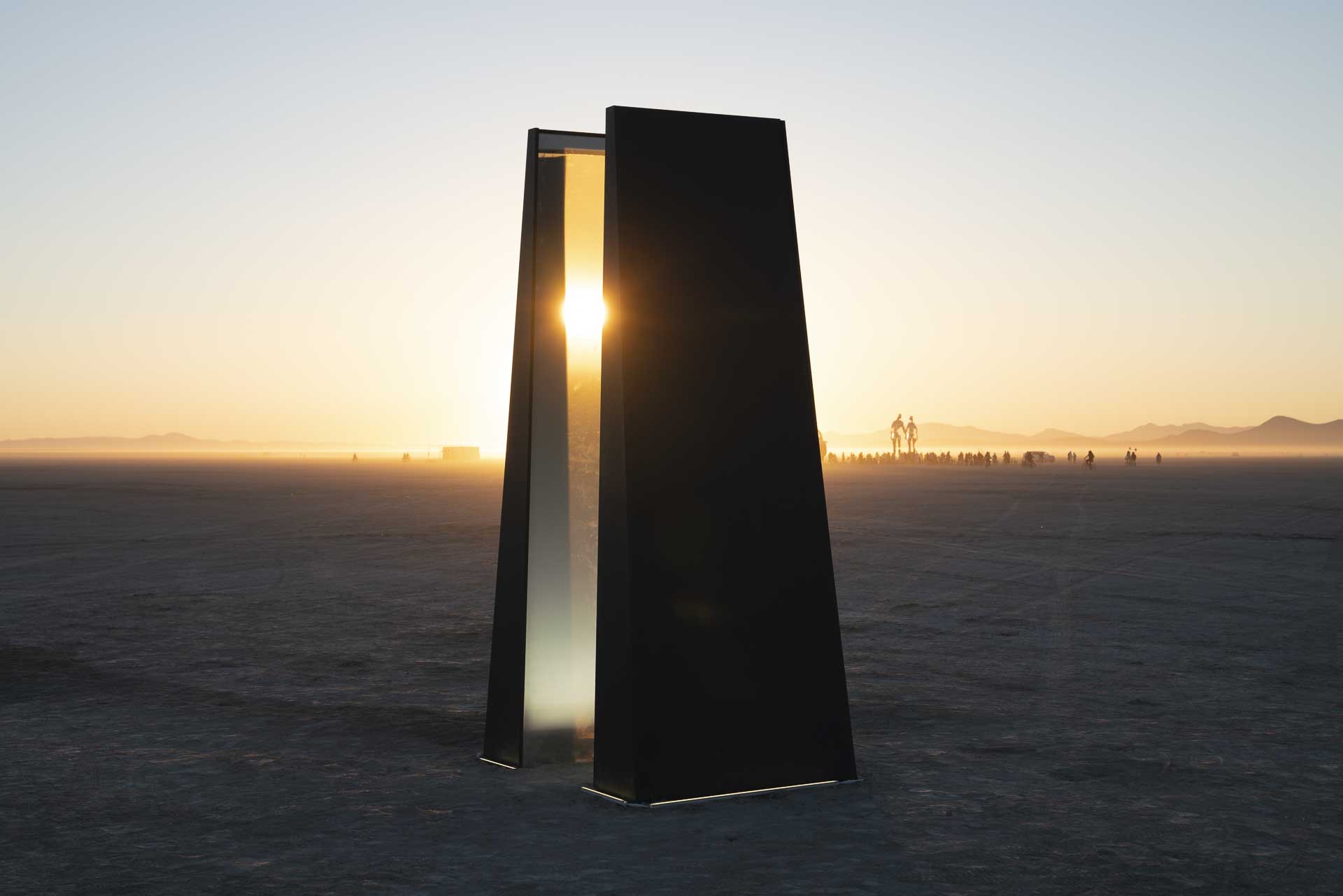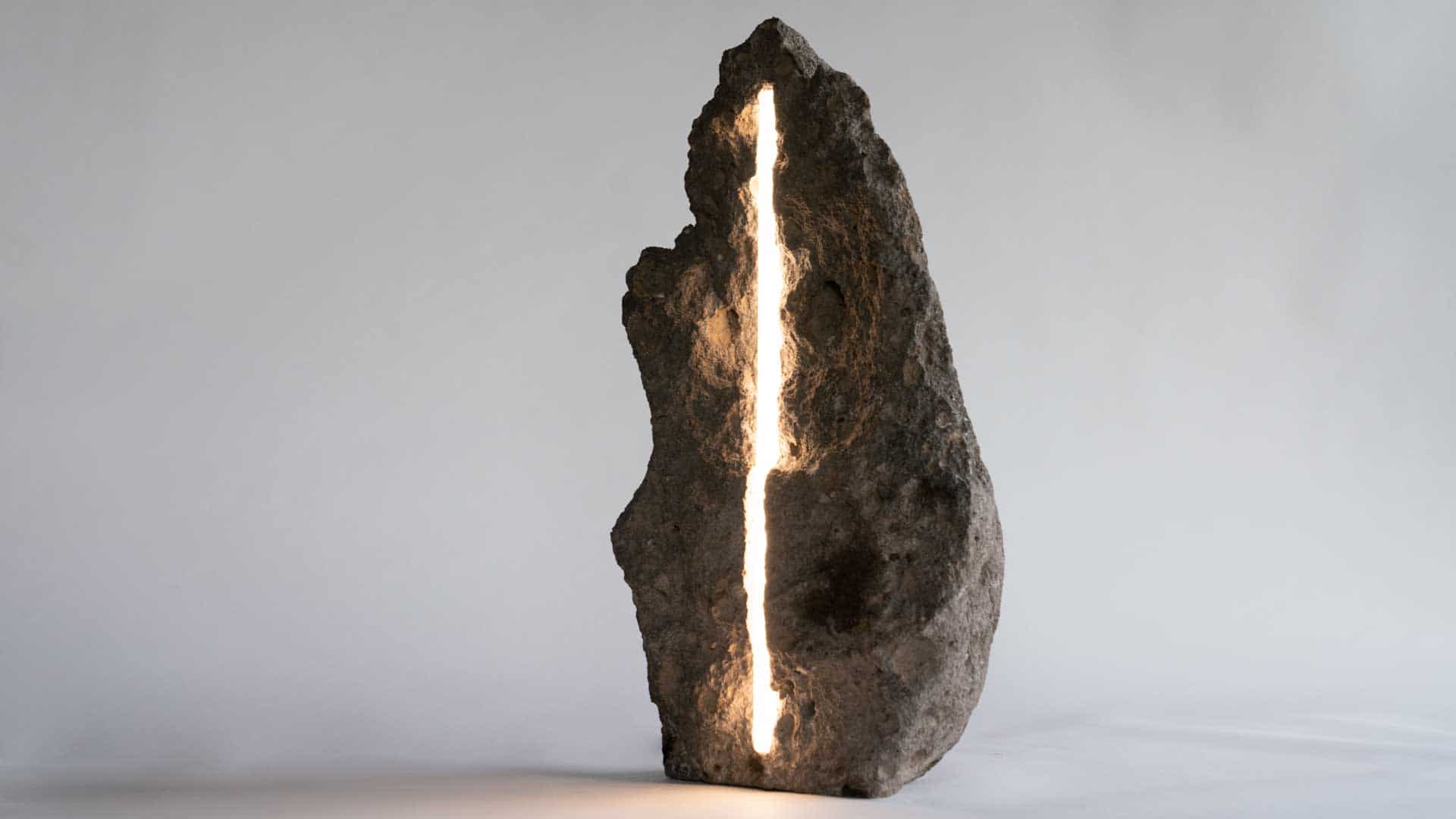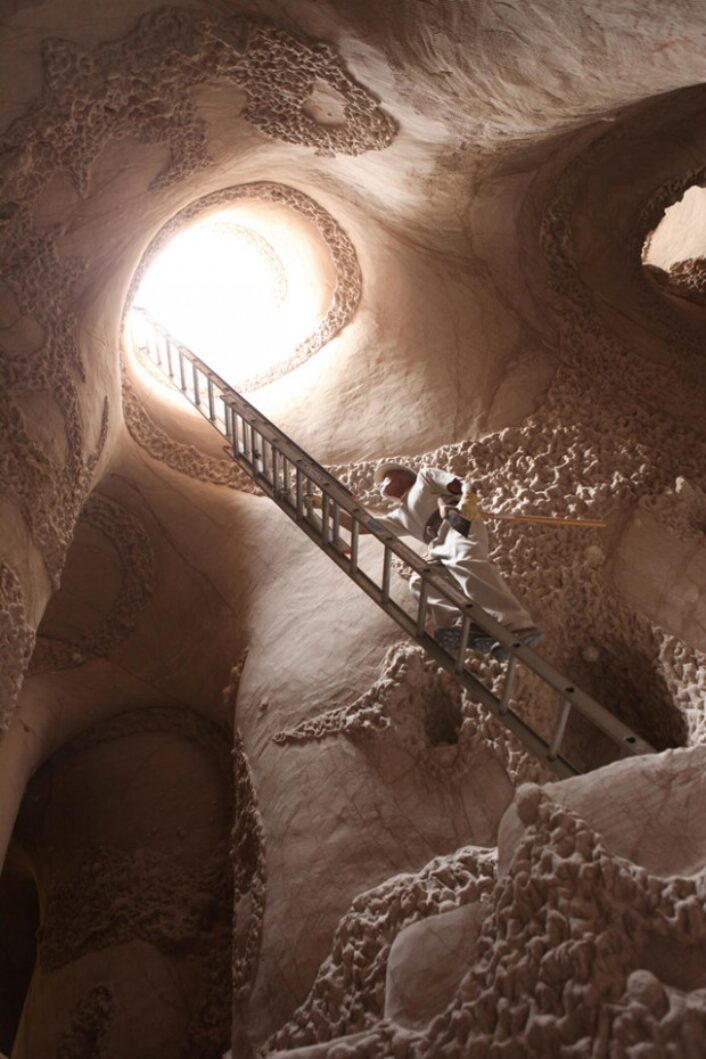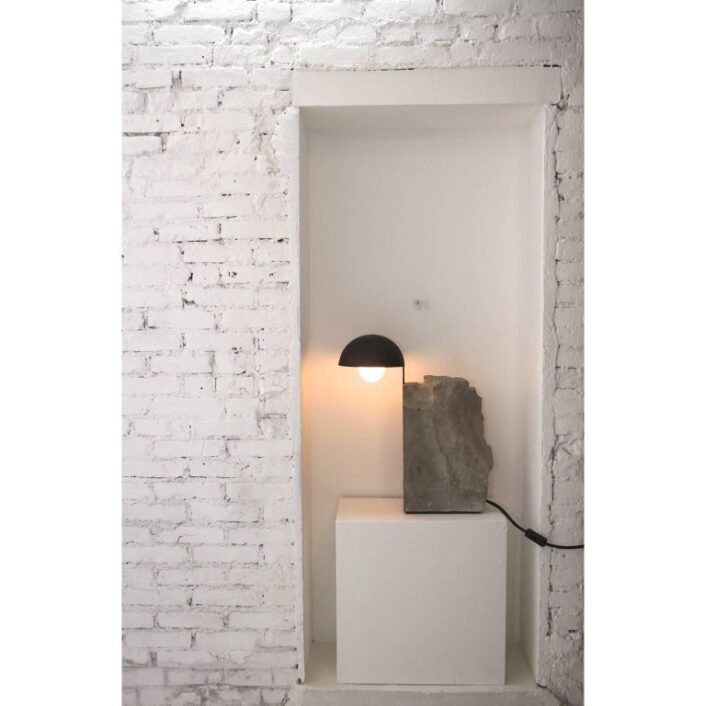This past year, De Paula created an amazing piece for Burning Man; it was his first large-scale, outdoor work. Titled, “Titan,” the ten-foot-tall piece is crafted from Zimbabwean black granite… one of the earth’s darkest and oldest stones. The inner faces of custom acrylic with a one-way mirror coating are a contrast to the exterior. Once the sun sets and the mirror is organically backlit, the work possesses an ethereal nocturnal glow.
Titan is meant to acknowledge the “enormity of time and humanity’s fleeting presence in the universe.” This is an idea that has challenged and intrigued the artist for several years. The culmination of this design was deemed possible when De Paula drove the components to New York City and physically assembled the 2,000-pound slabs using only manpower. As an added “bonus,” the desert heat reached over 100 degrees on most days!
